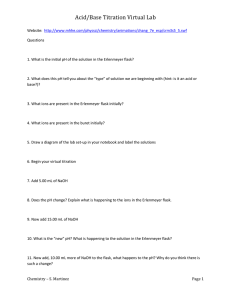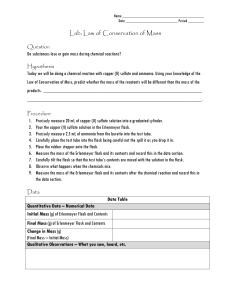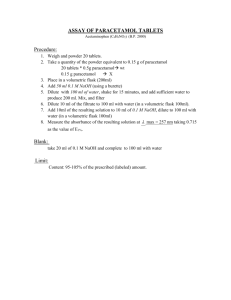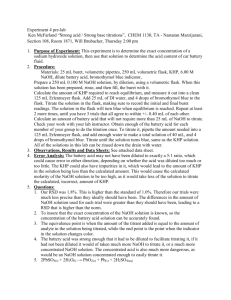File
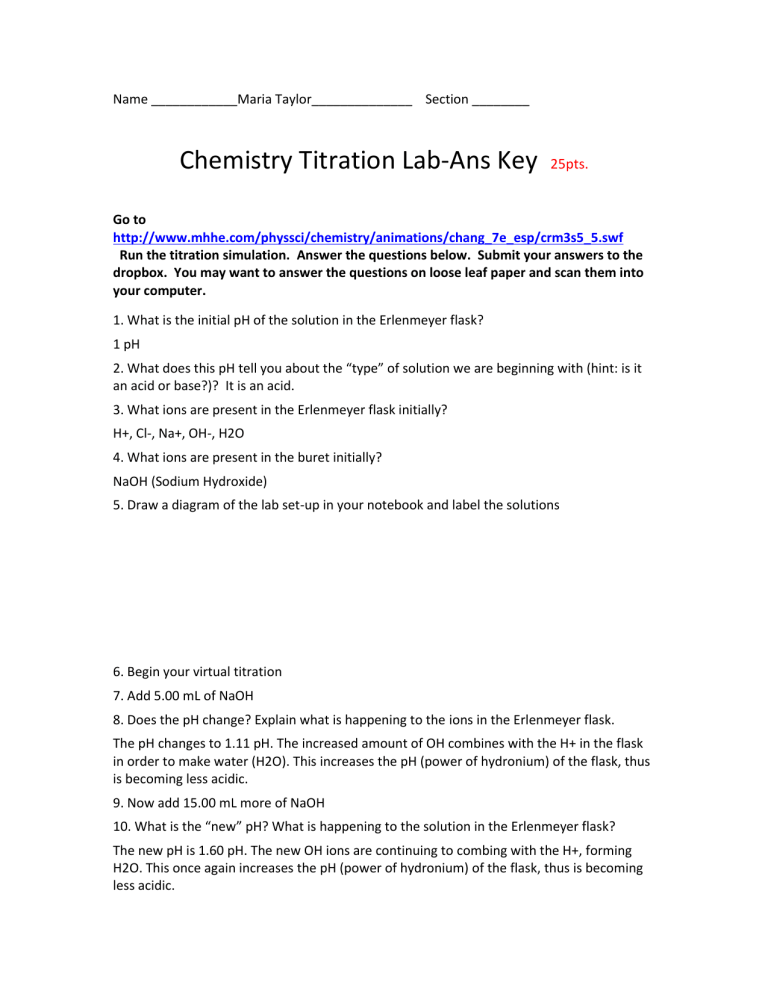
Name ____________Maria Taylor______________ Section ________
Chemistry Titration Lab-Ans Key
25pts.
Go to http://www.mhhe.com/physsci/chemistry/animations/chang_7e_esp/crm3s5_5.swf
Run the titration simulation. Answer the questions below. Submit your answers to the dropbox. You may want to answer the questions on loose leaf paper and scan them into your computer.
1. What is the initial pH of the solution in the Erlenmeyer flask?
1 pH
2. What does this pH tell you about the “type” of solution we are beginning with (hint: is it an acid or base?)? It is an acid.
3. What ions are present in the Erlenmeyer flask initially?
H+, Cl-, Na+, OH-, H2O
4. What ions are present in the buret initially?
NaOH (Sodium Hydroxide)
5. Draw a diagram of the lab set-up in your notebook and label the solutions
6. Begin your virtual titration
7. Add 5.00 mL of NaOH
8. Does the pH change? Explain what is happening to the ions in the Erlenmeyer flask.
The pH changes to 1.11 pH. The increased amount of OH combines with the H+ in the flask in order to make water (H2O). This increases the pH (power of hydronium) of the flask, thus is becoming less acidic.
9. Now add 15.00 mL more of NaOH
10. What is the “new” pH? What is happening to the solution in the Erlenmeyer flask?
The new pH is 1.60 pH. The new OH ions are continuing to combing with the H+, forming
H2O. This once again increases the pH (power of hydronium) of the flask, thus is becoming less acidic.
11. Now add, 10.00 mL more of NaOH to the flask, what happens to the pH? Why do you think there is such a change?
The pH neutralizes (reaches the pH of 7). This because both substances have reacted to their fullest, in other terms the OH ions and H+ ions have all combined to form water, hence the Sodium and Chloride ions do not affect the pH and the solution is now neutralized.
12. Explain why accuracy and precision are so important when performing titrations.
The accuracy and precision are so important when performing titrations because without just enough of the solute, the entire solution’s pH will be thrown off. Too little of the substance and the solution will remain acidic, too much and the solution will become basic.
13. What is the total volume of solution in the Erlenmeyer flask now?
90.0 mL is the total volume of the solution.
14. At pH=7.00, what ions/molecules are present in the Erlenmeyer flask?
H2O, Na+, Cl-.
15. Now add 5.00 mL more of NaOH.
16. What happens to the pH?
It increases to 12.02 pH, becoming a base.
17. Add 5.00 mL of NaOH again. Does the pH change?
Yes.
18. Make a sketch of the titration curve, labeling the axes, with pH as the dependant variable and volume of NaOH as the independent variable.
